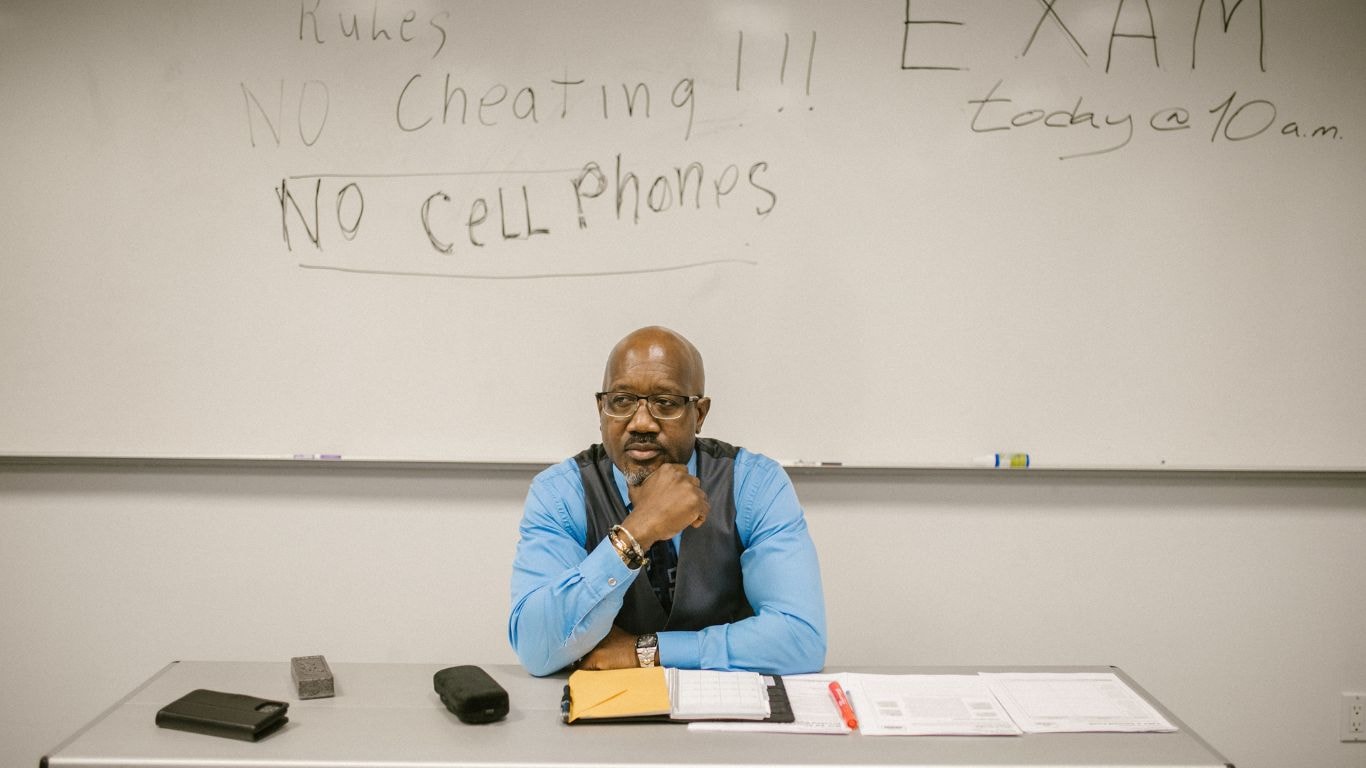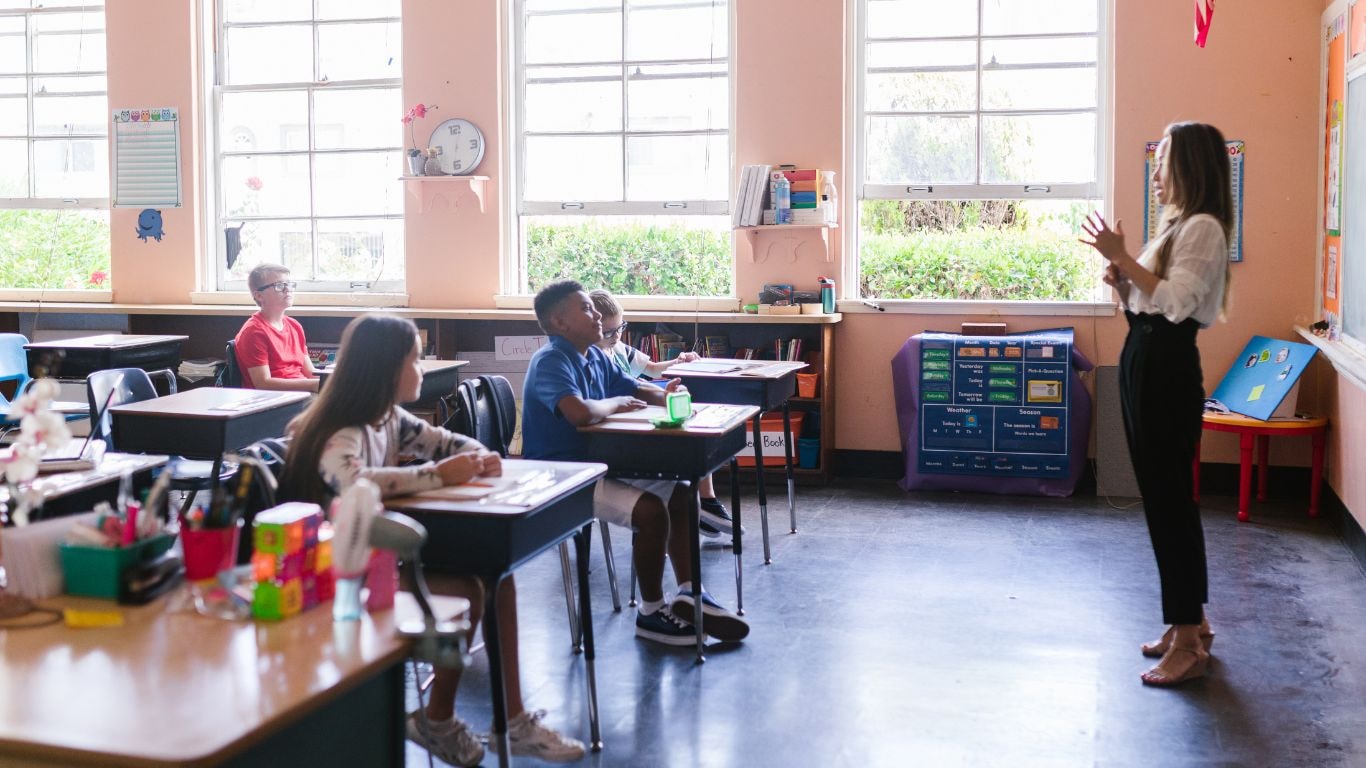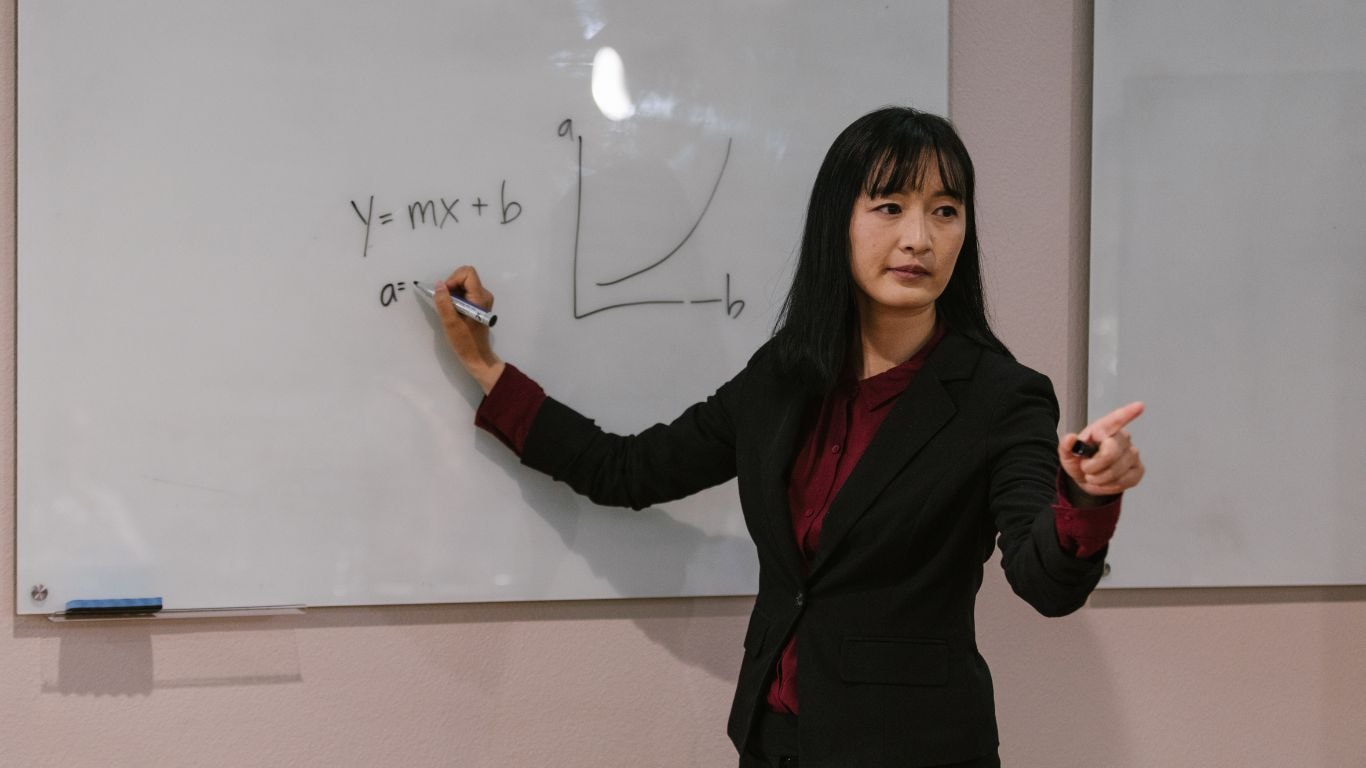If you’re asking a question, “What are the steps in a t-tess evaluation cycle and how do they guide teacher growth?” You’re in the right place.
This complete walkthrough breaks down all seven steps. From the first orientation to the end-of-year conference, you’ll know exactly what to expect at each stage.
Principales conclusiones
- Orientation kicks things off, helping teachers reflect on their practice and build a solid foundation for professional growth.
- Goal-setting and professional development planning follow, with clear objectives linked to student outcomes.
- The cycle concludes with the T-TESS end-of-year conference, reviewing progress and setting the stage for continuous improvement.
Step 1: T-TESS Orientation and Initial Setup

The first step in the Texas teacher evaluation cycle is orientation. This is a critical starting point, especially for teachers new to the T-TESS rubric or new to the district.
Orientation sessions lay the groundwork for the entire evaluation process. Teachers receive their district’s appraisal calendar and timeline, ensuring they understand all key deadlines and requirements. Orientation must be completed before any other evaluation activities can begin.
A central part of this T-TESS step is the self-assessment using the T-TESS rubric. This reflection allows teachers to identify their strengths, pinpoint areas for growth, and start shaping meaningful goals for the year. Connecting this self-assessment to professional development plans ensures that growth is intentional and aligned with teaching practice.
New teachers typically have six weeks to complete orientation requirements. This period is crucial, as it sets the tone for the entire evaluation cycle.
Step 2: Crafting Goals and Mapping Your Professional Growth
Once orientation is complete, the next cornerstone of the T-TESS evaluation cycle is goal-setting and professional development planning.
What is GSPD in T-TESS?
The Goal-Setting and Professional Development (GSPD) process is one of the cornerstones of the T-TESS evaluation cycle. It’s designed to help teachers take ownership of their professional growth while ensuring that development is directly tied to student learning. At its heart, the GSPD is about creating a personalized roadmap for continuous improvement.
During this stage, teachers collaborate with their appraisers to set goals that are both ambitious and achievable. These goals are clear, measurable, and grounded in daily classroom practice—not abstract aspirations. By focusing on real classroom impact, teachers can refine their instructional strategies while directly supporting student success.
GSPD in T-TESS Timeline
New teachers are expected to complete their Goal-Setting and Professional Development Plan (GSPDP) within six weeks of orientation or the first day of instruction. This plan is then discussed in a Goal-Setting and Professional Development Conference with their appraiser, ensuring alignment, clarity, and shared commitment to growth.
Throughout the school year, teachers actively implement their professional development plans. Attending workshops, collaborating with peers, or engaging in reflective practice are all designed to help achieve their defined goals.
Step 3: Pre-Observation Planning and Conference

The next phase in the T-TESS evaluation cycle is the pre-observation preparation. It’s a critical step that sets the stage for a meaningful, productive observation.
It is the roadmap before the journey when teachers and appraisers align expectations, clarify objectives, and ensure everyone is on the same page. At Education Walkthrough, we know that a well-prepared pre-conference can transform a classroom observation from a routine check-in into a powerful growth opportunity.
Pre-conferences typically occur 1–3 days before a scheduled formal observation. During this time, teachers review their lesson plans, highlight specific strategies, and provide context about their students’ needs.
This conversation allows educators to communicate any special circumstances or unique classroom dynamics that could influence the lesson. By sharing this context, teachers can reduce evaluation anxiety and foster a collaborative, supportive atmosphere with their appraiser.
A key part of pre-conference preparation is identifying targeted feedback areas. Teachers might ask for insights on engagement strategies, instructional techniques, or classroom management approaches. This proactive step ensures the upcoming observation is focused, actionable, and aligned with the teacher’s professional goals.
Step 4: Conducting the Formal Classroom Observation
The formal classroom observation is one of the most pivotal steps in the T-TESS evaluation cycle. It is an opportunity to capture a real, authentic snapshot of teaching practice.
Every teacher participates in at least one formal observation each year. It typically lasts a complete lesson or a minimum of 45 minutes, providing appraisers with a representative look at everyday classroom instruction.
During the observation, appraisers focus on several key areas:
- student engagement
- instructional delivery
- classroom management
- and overall learning environment.
Detailed notes are collected across the T-TESS observable domains, including:
- Planificación
- Instrucción
- Learning Environment
- Professional Practices and Responsibilities.
These notes are later analyzed using the T-TESS rubric to provide a comprehensive evaluation of teaching effectiveness.
A formal observation focuses on highlighting strengths and identifying growth opportunities. Teachers can see where their strategies are working well and pinpoint areas where adjustments might enhance student outcomes.
The evidence collected also forms the foundation for constructive, actionable feedback during the post-conference. It helps educators refine their practice and set meaningful goals for the future.
At Education Walkthrough, we’ve observed that teachers who embrace formal observations as collaborative learning experiences often gain the most insight. It’s a chance to reflect, grow, and experiment with new instructional techniques, all while building a stronger partnership with their appraiser. The formal classroom observation is, at its core, a tool for continuous professional development, ensuring teaching practices evolve to meet the needs of every student.
Step 5: Reflective Post-Observation Conference and Feedback

The post-conference stage turns observation data into actionable insights and meaningful professional growth. Scheduled within ten working days of the formal classroom observation, this conversation provides teachers with a structured opportunity to reflect on their practice, celebrate strengths, and pinpoint areas for improvement.
During the post-conference, appraisers and teachers collaborate to:
- Review evidence from the observation and connect it to the T-TESS rubric, giving a clear picture of performance levels.
- Highlight strengths and growth areas, offering concrete, actionable next steps for instructional improvement.
- Align professional development opportunities with the teacher’s goals, ensuring that learning initiatives directly support classroom practice.
- Document feedback and next steps, providing a clear roadmap for ongoing development and goal adjustments if necessary.
We understand that receiving feedback can sometimes feel intimidating. But when approached as a constructive, collaborative dialogue, it becomes one of the most valuable moments of the cycle.
Step 6: Continuous Support and Informal Check-Ins
Another key is ongoing monitoring through informal check-ins. These shorter, more frequent observations, often lasting 10–15 minutes, allow appraisers to provide timely, actionable feedback throughout the school year.
A constant feedback loop exists between teachers and appraisers due to informal observations. This dialogue is focused, practical, and immediately applicable, helping educators adjust strategies, celebrate successes, and address challenges well before formal evaluation points. It’s also an opportunity to ensure that professional development goals are staying on track and evolving as needed.
Plus, the power of these check-ins lies in their immediacy. Teachers receive guidance, resources, and support in real time, helping them refine their instructional practices and enhance student engagement. Rather than waiting for a formal observation or post-conference, teachers benefit from ongoing collaboration that builds confidence, competence, and professional growth.
Step 7: T-TESS End-of-Year Conference and Summative Evaluation

The final stage is the T-TESS end-of-year conference paired with the summative evaluation. It’s a reflective capstone that brings the year’s professional growth full circle.
Typically held throughout April, these conferences give teachers and appraisers a structured space to review progress and analyze data. It sets the stage for the following school year.
During this conference, teachers and appraisers:
- Review formal observation data collected throughout the year. Education Walkthrough offers you the tool to observe, document, and analyze formal observation data.
- Discuss outcomes tied to student learning objectives.
- Analyze student growth measures, a critical piece of the overall evaluation.
- Reflect on professional development achievements and identify priorities for the next cycle.
End-of-year conferences must occur no later than 15 working days before the last day of instruction, ensuring timely feedback and planning. Following the discussion, teachers receive the summative annual appraisal report within ten working days. The T-TESS summative report consolidates all evidence gathered across the year, offering a comprehensive view of performance while highlighting actionable insights for future growth.
Student Growth in T-TESS (SLOs)
Student growth is a central component of the T-TESS evaluation cycle, and it’s most often measured through Student Learning Objectives (SLOs). At its core, this part of the process is about connecting teacher growth with student success. Instead of relying only on test scores or one-time assessments, SLOs focus on a year-long, evidence-based look at how students progress under a teacher’s guidance.
Here’s how it works. Teachers identify specific learning objectives for their students early in the year, grounded in curriculum standards and tailored to their classroom context. These objectives are measurable, aligned to real learning outcomes, and designed to track growth over time.
Throughout the year, teachers collect evidence of student learning through formative assessments, student work samples, and progress monitoring. This evidence becomes the foundation for reflection and adjustment, allowing teachers to refine their instruction to meet students where they are. By the time of the end-of-year conference, teachers and appraisers can analyze this data together, connecting the dots between instructional choices, student progress, and overall growth.
What Are the T-TESS Pre-Conference Questions and Evidence Requirements?
The pre-conference is designed to set teachers up for success by clarifying expectations, reviewing instructional plans, and connecting teaching strategies to student learning. It’s less about being “tested” and more about creating a shared understanding between teacher and appraiser.
Here are three exemplar questions teachers can expect in a T-TESS pre-conference:
Q1: How does this lesson connect to your long-term goals for student learning?
This helps appraisers see the bigger picture while giving teachers space to articulate intentional planning.
Q2: What strategies will you use to check for student understanding during the lesson?
This ensures formative assessment is embedded and highlights the teacher’s plan to adapt instruction in real time.
Q3: How will you support students who may struggle with the content, while also challenging those who are ready to go deeper?
This question spotlights differentiation and equitable access to learning.
Key Timeline Reference for the T-TESS Evaluation Cycle
Staying on top of the T-TESS evaluation cycle is easier when you have a clear timeline to follow. Districts typically provide an appraisal calendar within three weeks of the first day of instruction, giving teachers a roadmap of important dates and deadlines. Formal observations are scheduled based on this calendar, usually starting after the first two weeks of school to allow teachers time to settle in.
Here’s a quick reference for the key T-TESS steps and their typical timelines:
- Orientation and Self-Assessment: Completed within the first 6 weeks of the school year.
- Goal-Setting and Professional Development Planning: Completed within 6 weeks of finishing orientation.
- Pre-Conference and Formal Observation: Generally scheduled between October and March (exact timing varies by district).
- End-of-Year Conference: Held in April, no later than 15 working days before the last day of instruction.
Keeping these dates in mind ensures teachers stay aligned with district expectations, meet all requirements, and move through the cycle smoothly.
What Are The Steps in a T-TESS Evaluation Cycle: Final Thoughts
Navigating the T-TESS evaluation cycle is essential for teachers, administrators, and support staff alike. From the initial orientation to end-of-year conferences, every step is designed to support continuous professional growth and strengthen instructional practice.
Education Walkthrough helps make this process simpler and more impactful, providing tools to guide professional development every step of the way. Our platform empowers instructional leaders to support teachers effectively through targeted classroom walkthroughs.
Preguntas frecuentes
Have questions? We are happy to help!
What is the purpose of the pre-conference in the T-TESS evaluation process?
The pre-conference is vital for aligning objectives and expectations between teachers and appraisers prior to the formal observation. It serves as a platform to discuss specific focuses and any unique situations affecting the teacher evaluation and support system.
How long must each classroom observation last?
Classroom observations must last a minimum of 45 minutes. This duration ensures a thorough assessment of the teaching and learning environment.
What happens during the post-conference?
During the post-conference, teachers and appraisers analyze the teacher’s performance based on observational evidence, pinpointing areas for improvement and professional development. This collaborative review is essential for fostering growth and enhancing teaching effectiveness.
When must the end-of-year conference occur?
The end-of-year conference must take place no later than 15 working days prior to the last day of instruction.
What are the four domains of the T-TESS rubric?
The four domains of the T-TESS rubric are Planning, Instruction, Learning Environment, and Professional Practices and Responsibilities. Each domain plays a crucial role in evaluating and enhancing teaching effectiveness.


![T-TESS Evaluation Cycle [Definitive Guide]](https://educationwalkthrough.com/wp-content/uploads/2025/09/T-TESS-Evaluation-Cycle-Definitive-Guide-300x157.jpg)
